When we’re shopping for tires or calculating clearances for our vehicles, understanding tire dimensions becomes crucial. The 255/75R17 tire size is incredibly popular among truck and SUV owners, but deciphering what these numbers mean in actual inches can be confusing.
We’ve all been there – staring at tire sidewalls wondering how to translate those cryptic numbers into real-industry measurements. The 255/75R17 designation tells us exact details about width, sidewall height, and rim diameter, but knowing the exact inches helps us make informed decisions about fitment and performance.
Whether you’re upgrading your ride, checking ground clearance, or ensuring proper wheel well spacing, we’ll break down exactly what 255/75R17 means in inches. Understanding these measurements empowers you to choose the right tires and avoid costly mistakes that could affect your vehicle’s handling and safety.
Understanding Tire Size Notation: 255/75R17 Breakdown
The 255/75R17 designation represents a standardized system that manufacturers use to communicate tire specifications. We decode this alphanumeric sequence to understand the exact dimensions and construction type of our tires.
What Each Number Represents
The first number “255” indicates the tire’s section width measured in millimeters from sidewall to sidewall. This measurement represents the widest point of the tire when properly mounted and inflated. Converting 255 millimeters equals approximately 10.04 inches of tire width.
The second number “75” represents the aspect ratio expressed as a percentage. This figure shows the relationship between the tire’s sidewall height and its section width. A 75% aspect ratio means the sidewall height measures 75% of the section width. For our 255mm tire width, the sidewall height calculates to 191.25 millimeters or 7.53 inches.
The final number “17” specifies the wheel diameter in inches. This measurement indicates the internal diameter of the tire where it mounts to the rim. Our tire fits wheels with a 17-inch diameter.
The “R” Designation Explained
The letter “R” stands for radial construction in tire manufacturing terminology. Radial tires feature cord plies that run perpendicular to the direction of travel. This construction method provides better fuel economy, improved tread wear patterns, and enhanced vehicle handling compared to bias-ply alternatives.
Radial construction allows the tire sidewall to flex independently from the tread area. This design reduces heat buildup during operation and delivers more consistent ground contact. Modern passenger vehicles, trucks, and SUVs use radial tires as the industry standard for safety and performance reasons.
Converting 255/75R17 to Inches
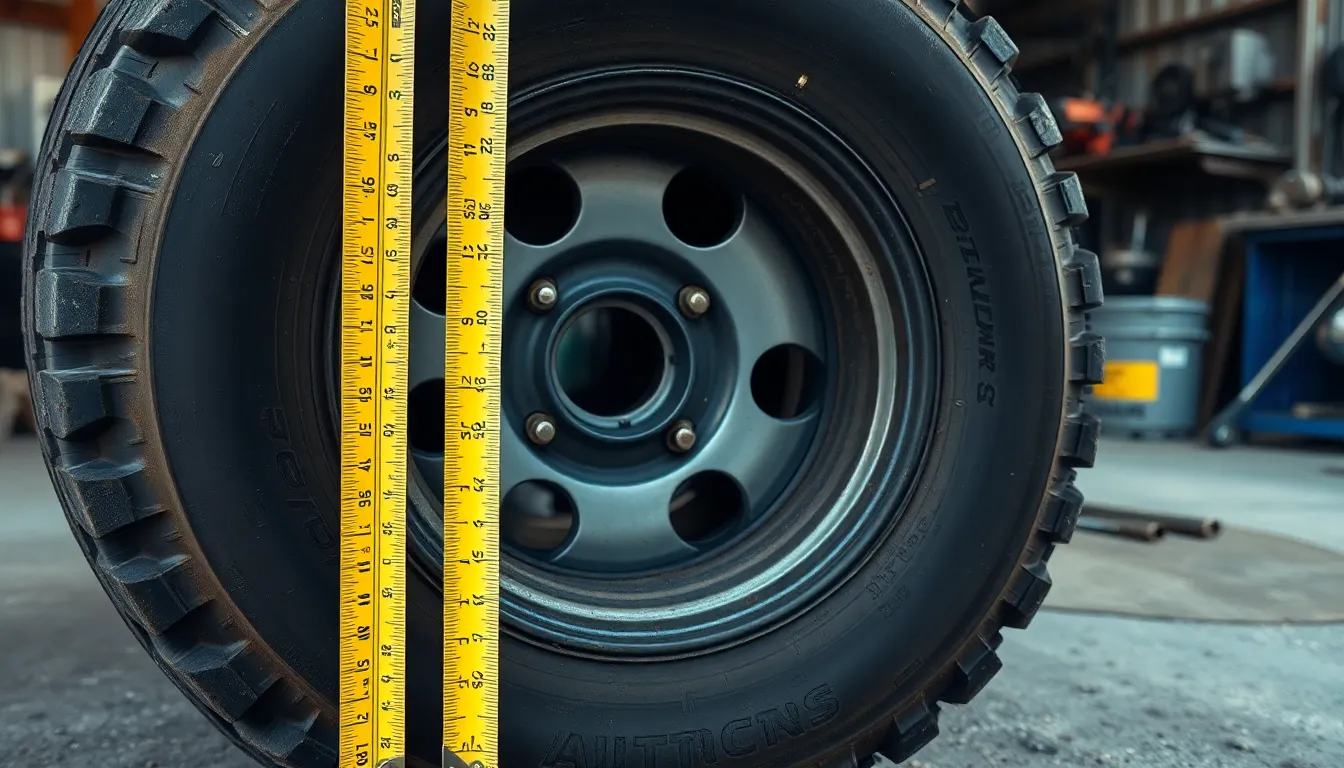
Converting the 255/75R17 tire size to inches requires precise mathematical calculations for each component. We’ll break down the conversion process into three essential measurements that determine the tire’s physical dimensions.
Width Conversion (255mm to Inches)
The width conversion transforms the metric measurement into the imperial system using a standard conversion factor. We divide 255 millimeters by 25.4 to convert the tire width into inches:
Width in inches = 255 ÷ 25.4 = 10.04 inches
This calculation gives us approximately 10.0 inches for the tire’s section width. The section width represents the tire’s widest point when mounted on the specified rim width and properly inflated.
Sidewall Height Calculation
Calculating the sidewall height involves applying the aspect ratio percentage to the converted width measurement. We multiply the tire width in inches by the aspect ratio (75%) to determine the sidewall dimension:
Sidewall height = 10.04 × 0.75 = 7.53 inches
The sidewall height measures approximately 7.5 inches from the rim edge to the tread surface. This measurement affects ride comfort, handling characteristics, and the tire’s overall appearance on the vehicle.
Overall Diameter in Inches
Determining the overall diameter combines the rim diameter with both sidewall measurements to establish the tire’s total height. We add the 17-inch rim diameter to twice the sidewall height:
Overall diameter = 17 + (2 × 7.53) = 32.06 inches
| Measurement | Value |
|---|---|
| Tire Width | 10.0 inches |
| Sidewall Height | 7.5 inches |
| Rim Diameter | 17 inches |
| Overall Diameter | 32.1 inches |
The complete tire measures approximately 32.1 inches in overall diameter. This dimension impacts speedometer accuracy, ground clearance, and wheel well fitment when considering tire upgrades or replacements.
Performance Characteristics of 255/75R17 Tires
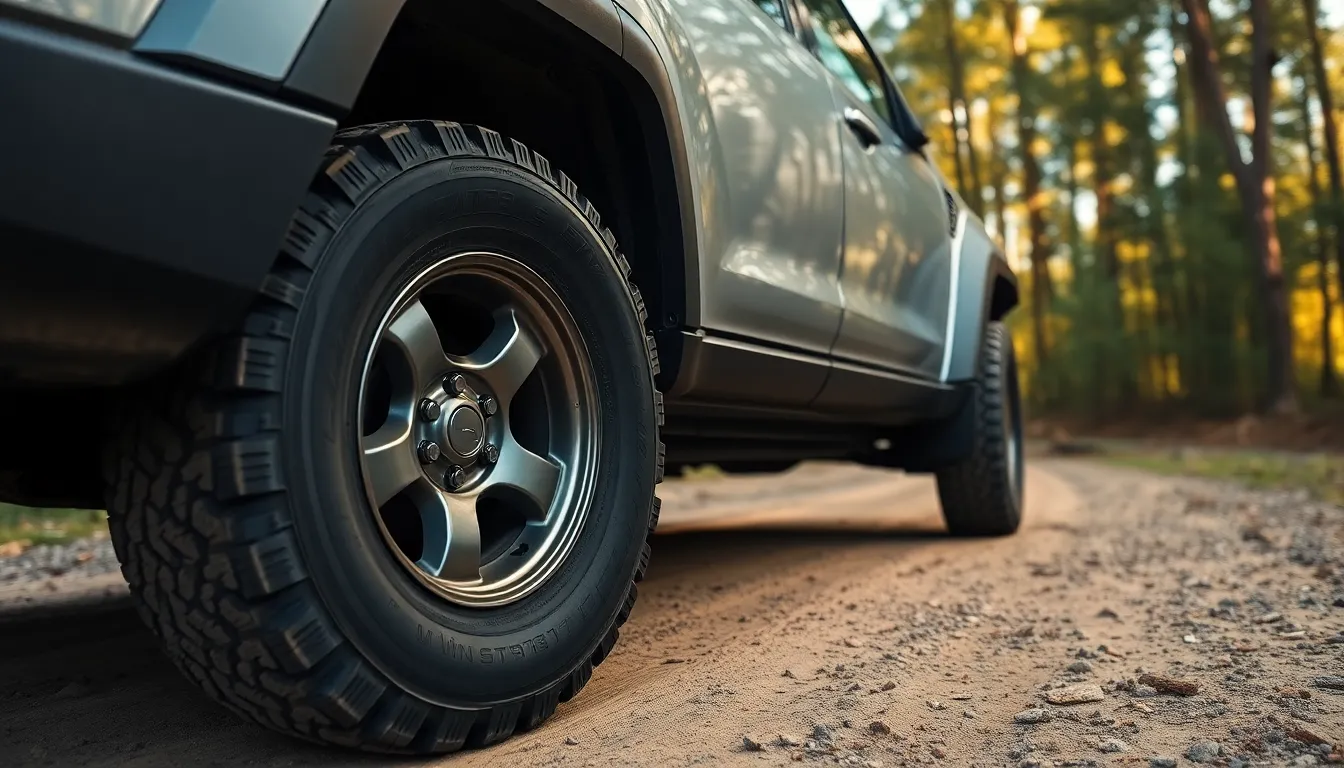
The 255/75R17 tire size delivers exact performance attributes that directly impact your driving experience. These characteristics vary across handling precision, fuel consumption, and load bearing capacity.
Handling and Ride Quality
255/75R17 tires offer balanced performance between on-road comfort and off-road capability. The larger sidewall provides enhanced ride comfort by absorbing road imperfections more effectively than lower profile alternatives. Handling precision experiences slight reduction compared to tires with smaller sidewalls due to increased sidewall flex during cornering maneuvers. This trade-off makes the 255/75R17 size particularly suitable for drivers who prioritize comfort over razor-sharp steering response. The increased air volume within the tire contributes to a smoother ride quality, especially on rough terrain or highway surfaces.
Fuel Economy Impact
255/75R17 tires create slight negative effects on fuel economy due to increased rolling resistance and overall weight. The larger diameter and wider footprint require more energy to maintain rotation, resulting in higher fuel consumption compared to smaller tire sizes. Vehicle type and driving conditions significantly influence the actual fuel economy impact you’ll experience. Highway driving typically shows less fuel penalty than city driving with frequent acceleration and braking cycles. The 32.1-inch overall diameter affects gear ratios and engine RPM at cruising speeds, potentially altering your vehicle’s optimal fuel efficiency range.
Load Capacity and Durability
255/75R17 tires feature robust construction designed to handle heavy loads commonly associated with trucks and SUVs. The durability characteristics make these tires well-suited for demanding applications including towing, hauling, and off-road adventures. Load capacity specifications vary significantly between manufacturers and exact tire models, requiring verification of exact load ratings for your intended use. The reinforced sidewall construction typical of this size category provides enhanced puncture resistance and structural integrity under heavy loads. These tires maintain performance stability when carrying maximum payload weights while preserving ride comfort for daily driving scenarios.
Vehicle Compatibility for 255/75R17 Tires
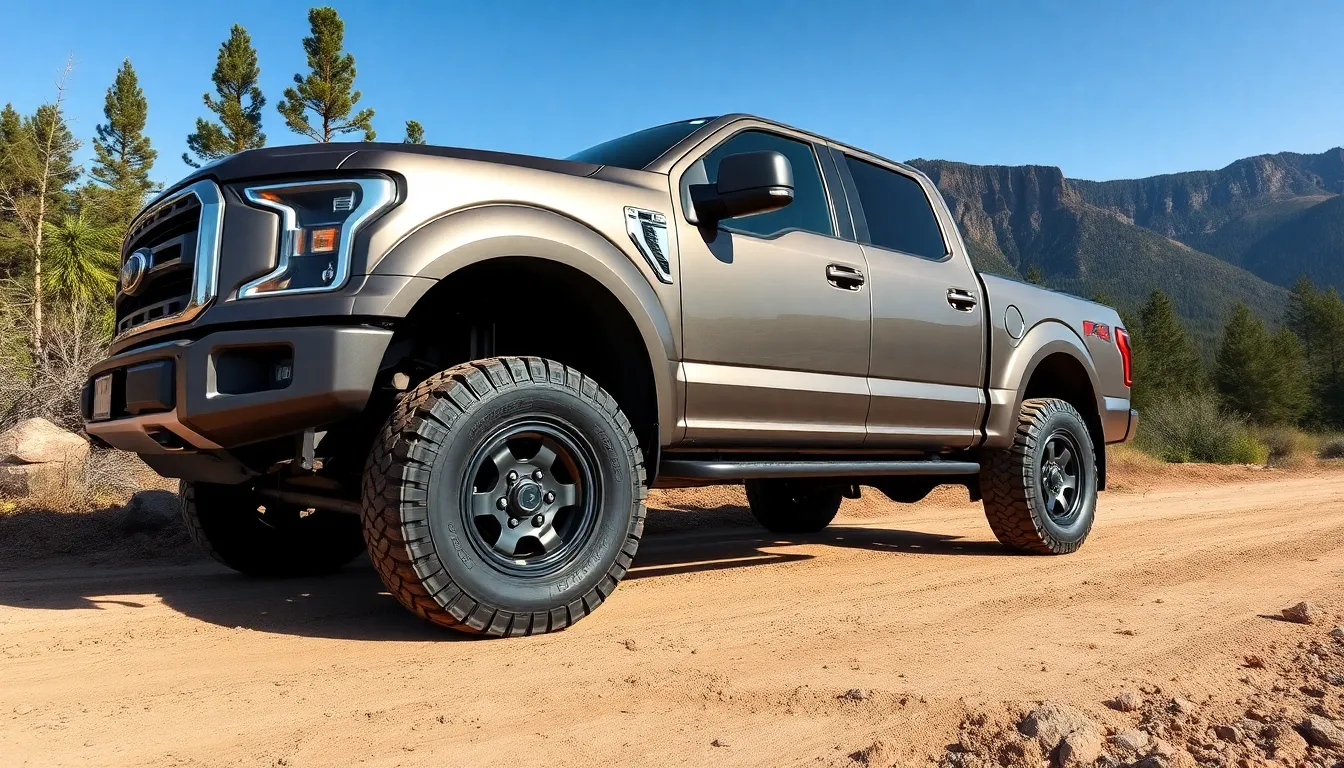
We find that 255/75R17 tires serve exact vehicle categories requiring robust construction and enhanced clearance capabilities. These tires match vehicles designed for versatility between highway driving and moderate off-road conditions.
Common Vehicle Applications
Pickup trucks represent the primary application for 255/75R17 tires due to their load carrying requirements and ground clearance needs. Full-size SUVs frequently use this tire size to balance passenger comfort with towing capacity. Light commercial vehicles benefit from the 32.1-inch overall diameter when hauling equipment or materials across varied terrain.
Off-road enthusiasts select 255/75R17 tires for their 10.0-inch section width that provides stability on loose surfaces. Adventure vehicles gain improved approach angles from the tire’s substantial sidewall height of approximately 7.5 inches. Recreational vehicles like camping trailers often specify this size for durability during extended outdoor excursions.
Work trucks capitalize on the 629 revolutions per mile rating for consistent performance under heavy loads. Fleet operators appreciate the tire’s compatibility with 6.5 to 8.5-inch wheel widths, allowing standardization across different vehicle models. Emergency response vehicles use these tires when requiring reliable traction in challenging conditions.
OEM vs Aftermarket Considerations
Original Equipment Manufacturer specifications guarantee proper fitment with your vehicle’s suspension geometry and load ratings. OEM tires undergo extensive testing with exact vehicle models to ensure optimal speedometer accuracy and handling characteristics. Factory recommendations account for the 100.7-inch circumference when calibrating electronic systems and safety features.
Aftermarket options expand beyond OEM limitations while maintaining the essential 255/75R17 dimensions. Performance upgrades include enhanced tread compounds for exact driving conditions like mud terrain or all-season versatility. Cost savings emerge through aftermarket choices without compromising the fundamental 32.1-inch diameter requirement.
Warranty considerations differ significantly between OEM and aftermarket selections. Manufacturer warranties typically cover OEM tires under vehicle defect claims, while aftermarket warranties depend on tire brand policies. Installation complexity remains minimal since both options use the standard 17-inch wheel diameter specification.
Comparing 255/75R17 to Other Popular Tire Sizes
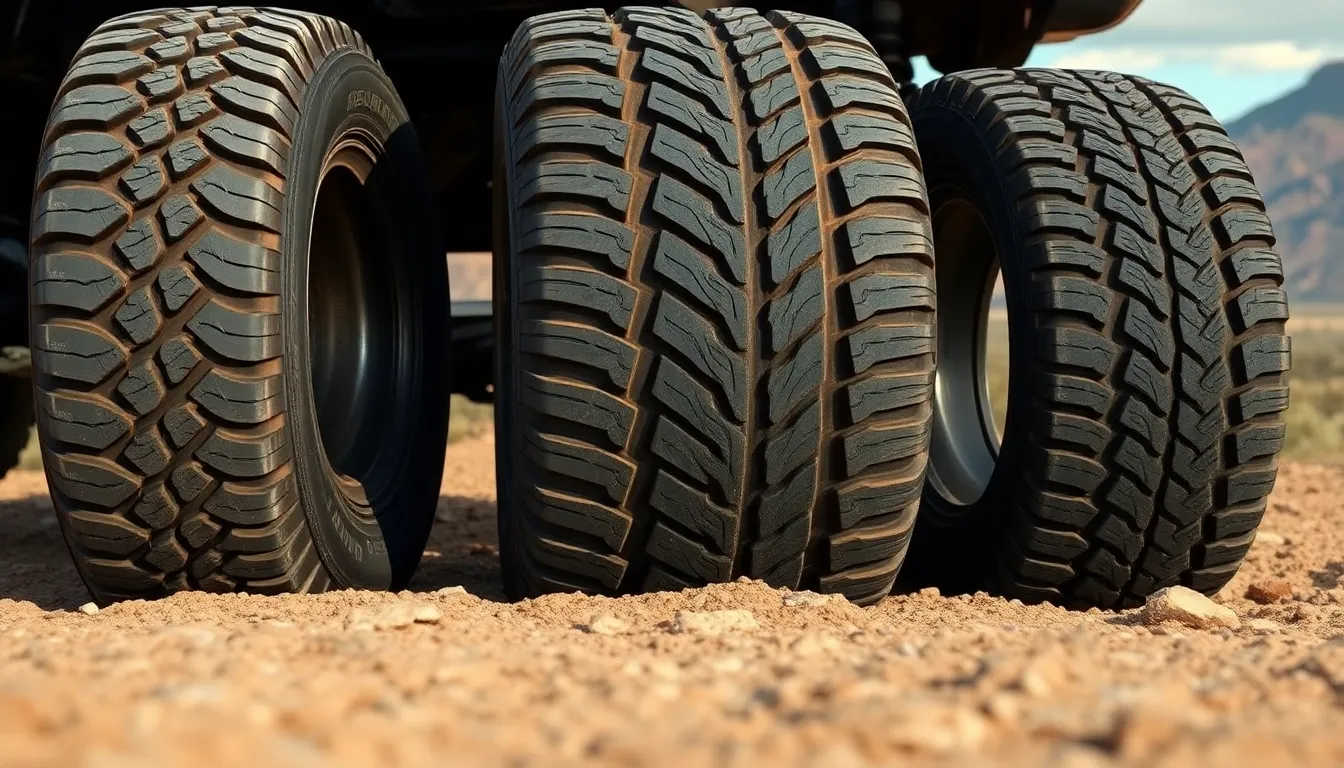
Understanding how the 255/75R17 measures against other common tire sizes helps you make informed decisions about tire upgrades or replacements. We’ve compiled data on the most frequently compared tire sizes to show the actual differences in inches.
Similar Metric Sizes
Several metric tire sizes offer comparable dimensions to the 255/75R17, making them viable alternatives for your vehicle. The 265/75R17 typically measures about 0.2 inches larger in diameter than the 265/70R17 but remains smaller than our reference 255/75R17 size depending on manufacturer specifications.
265/70R17 provides the closest comparison while maintaining a smaller profile. This tire measures approximately 0.45 inches less in diameter than the 255/75R17, creating a speedometer difference of 1.4%. The reduced diameter translates to improved acceleration and fuel efficiency while sacrificing some ground clearance.
275/75R17 represents a larger alternative with a diameter 1.18 inches greater than the 255/75R17. This size difference produces a speedometer variance of 3.6%, requiring recalibration for accurate readings. Common alternatives like 265/75R17 and 265/70R17 fall between these measurements, offering intermediate sizing options.
Performance Trade-offs
Each tire size modification brings exact performance characteristics that affect your vehicle’s behavior and efficiency. Larger diameter options like the 275/75R17 increase ground clearance but reduce acceleration and fuel efficiency due to additional rotating mass and altered gear ratios.
Smaller diameter choices such as the 265/70R17 enhance acceleration and fuel efficiency while reducing ground clearance capabilities. Speedometer readings become more accurate with smaller tires, eliminating the need for recalibration in most cases.
The 255/75R17 size balances ground clearance and width effectively, offering a stable footprint with minimal performance impact compared to wider or taller alternatives. This balanced approach makes it ideal for drivers seeking versatile performance across different driving conditions without important compromises.
| Tire Size | Diameter Difference | Speedometer Variance | Primary Benefits |
|---|---|---|---|
| 265/70R17 | -0.45 inches | 1.4% slower reading | Better acceleration, fuel efficiency |
| 255/75R17 | Baseline | Accurate | Balanced performance |
| 275/75R17 | +1.18 inches | 3.6% faster reading | Increased ground clearance |
Shopping Tips for 255/75R17 Tires
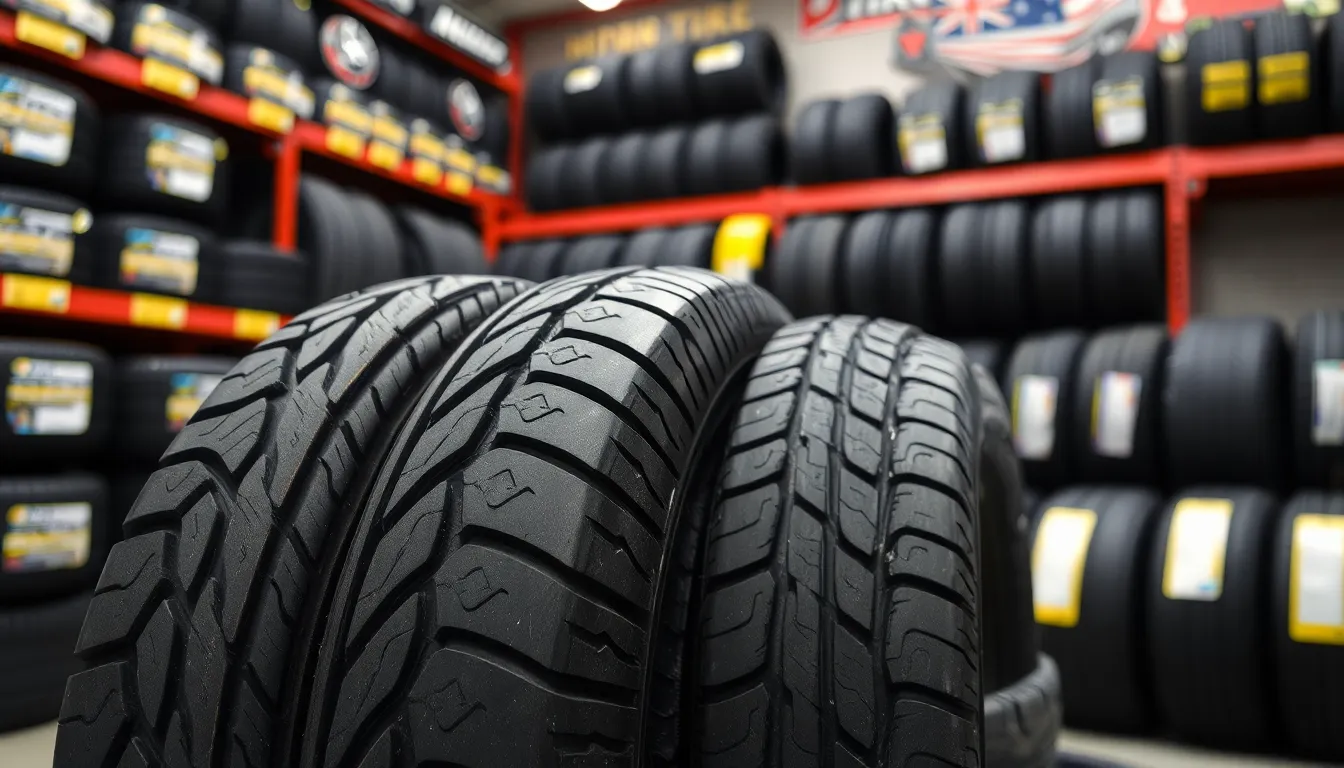
Finding the right 255/75R17 tires requires careful consideration of brand quality and value proposition. We’ve compiled essential guidance to help you make an informed purchasing decision.
Top Brand Recommendations
BFGoodrich leads the market with proven durability and off-road performance in the 255/75R17 segment. Their All-Terrain T/A KO2 series offers exceptional puncture resistance and tread life for truck owners who demand reliability.
Goodyear provides excellent highway comfort with their Wrangler line, delivering smooth rides and consistent wear patterns across 50,000+ mile warranties. Their construction focuses on reducing road noise while maintaining traction in various weather conditions.
Michelin stands out for premium construction and fuel efficiency optimization in their LTX series. These tires feature advanced rubber compounds that extend tread life up to 20% longer than standard alternatives while maintaining excellent wet weather grip.
Cooper delivers cost-effective answers without compromising safety standards. Their Discoverer line balances price with performance, offering solid warranties and dependable service for budget-conscious consumers.
Toyo rounds out our recommendations with innovative tread designs and competitive pricing. Their Open Country series excels in mixed terrain applications, providing versatility for drivers who split time between highways and trails.
Price Range and Value Considerations
Budget options for 255/75R17 tires start around $150-200 per tire, offering basic performance for standard driving conditions. These entry-level tires typically provide 40,000-50,000 mile warranties but may sacrifice longevity and fuel efficiency.
Mid-range selections cost $200-300 per tire and deliver balanced performance across multiple categories. We recommend this tier for most drivers as it provides optimal value through enhanced durability, better fuel economy, and improved safety features.
Premium tires range from $300-450 per tire but justify costs through superior materials and construction. These options feature advanced tread compounds, reinforced sidewalls, and extended warranties up to 80,000 miles.
Load and speed ratings significantly impact pricing, with higher ratings commanding premium costs. LT-rated tires cost approximately 15-25% more than standard passenger ratings but provide essential durability for heavy-duty applications.
Installation costs add $25-50 per tire at most retailers, while tire disposal fees typically run $3-5 per old tire. We suggest factoring these additional expenses when comparing total ownership costs between different brands and retailers.
Conclusion
Understanding that a 255/75R17 tire measures approximately 10.0 inches wide with a 32.1-inch overall diameter empowers you to make confident tire decisions. We’ve shown you how these measurements directly impact your vehicle’s performance and compatibility.
Whether you’re upgrading for better off-road capability or replacing worn tires we recommend sticking with OEM specifications for optimal safety and performance. The 255/75R17 size offers an excellent balance of comfort capability and durability for most truck and SUV applications.
Armed with this knowledge about tire dimensions and conversions you can now shop confidently and choose tires that’ll deliver the performance you need while ensuring proper fitment on your vehicle.
Frequently Asked Questions
What does 255/75R17 mean in inches?
The 255/75R17 tire size converts to approximately 10.0 inches in width, 7.5 inches in sidewall height, and 32.1 inches in overall diameter. The “255” represents the width in millimeters (10.04 inches), “75” is the aspect ratio (75% of width for sidewall height), and “17” indicates the rim diameter in inches.
How do you calculate the overall diameter of a 255/75R17 tire?
To calculate the overall diameter, add the rim diameter (17 inches) to twice the sidewall height. The sidewall height is 75% of 255mm (7.53 inches). Therefore: 17 + (2 × 7.53) = 32.06 inches, which rounds to approximately 32.1 inches total diameter.
What vehicles are compatible with 255/75R17 tires?
255/75R17 tires are ideal for pickup trucks, full-size SUVs, light commercial vehicles, and off-road vehicles. Popular compatible models include Ford F-150, Chevrolet Silverado, Toyota Tundra, and various SUVs. Always check your vehicle’s OEM specifications to ensure proper fitment and performance.
How does 255/75R17 compare to other tire sizes?
Compared to 265/70R17 (31.6″ diameter), the 255/75R17 offers more ground clearance but slightly less acceleration. Against 275/75R17 (32.9″ diameter), it provides better fuel efficiency and acceleration while sacrificing some ground clearance. The 255/75R17 offers balanced performance across various driving conditions.
What are the performance characteristics of 255/75R17 tires?
255/75R17 tires provide balanced on-road comfort and off-road capability. The larger sidewalls enhance ride comfort but may reduce handling precision. They typically have higher rolling resistance affecting fuel economy, but offer excellent load capacity for towing and heavy-duty applications with reinforced sidewalls for durability.
How much do 255/75R17 tires cost?
255/75R17 tire prices vary by brand and quality. Budget options start around $150-200 per tire, mid-range selections cost $200-300, and premium tires range from $300-450. Consider installation costs and additional fees when comparing total ownership costs. Top brands include BFGoodrich, Goodyear, Michelin, Cooper, and Toyo.
What does the “R” in 255/75R17 stand for?
The “R” in 255/75R17 stands for radial construction. Radial tires have steel belts running perpendicular to the direction of travel, which enhances fuel economy, improves tread wear, and provides better vehicle handling. Radial construction is the industry standard for modern vehicles.
Will changing to 255/75R17 tires affect my speedometer?
Yes, changing tire sizes can affect speedometer accuracy. If you’re switching from a different size to 255/75R17, the speedometer reading will vary based on the diameter difference. A larger diameter tire will make your speedometer read slower than actual speed, while a smaller diameter will make it read faster.






